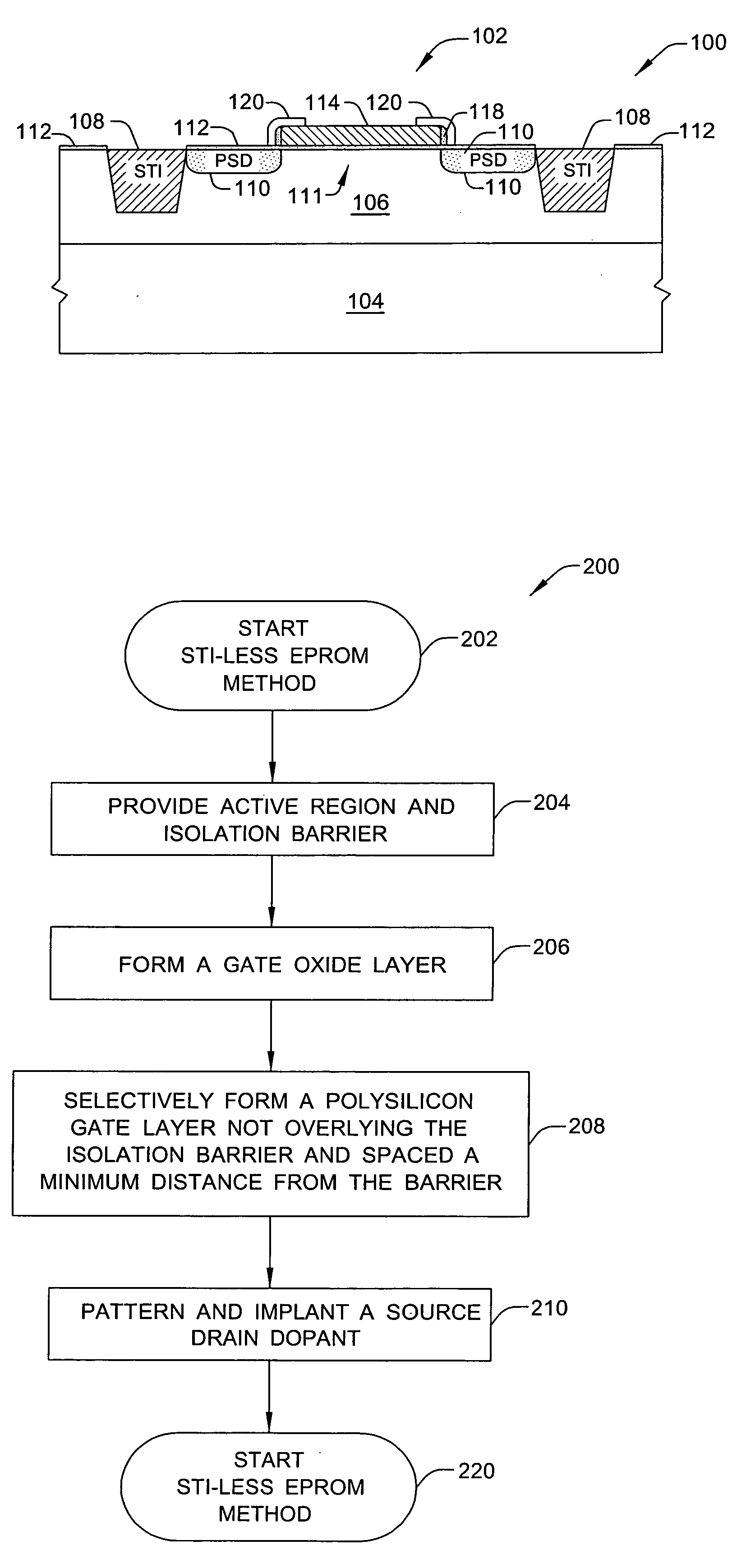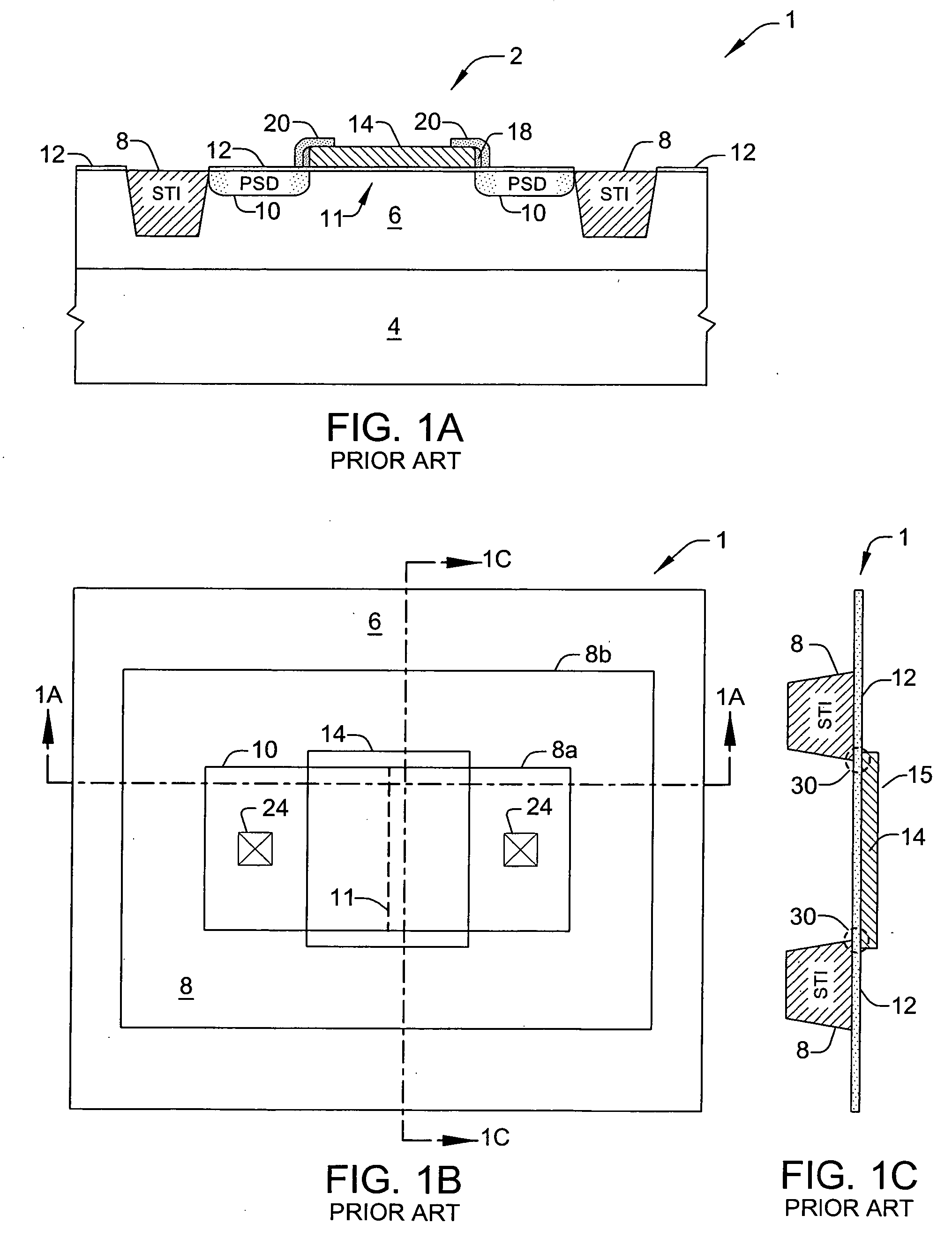Bird's beak-less or STI- less OTP EPROM
a technology of eprom and eprom layer, which is applied in the direction of semiconductor devices, electrical devices, transistors, etc., can solve the problems of weak or otherwise unreliable memory cells, non-uniform local thinning in the subsequent growth of gate oxide layers, and cell charge loss, so as to facilitate the fabrication of more reliable otp memory cells, reduce wafer manufacturing costs, and uniform gate oxide thickness
- Summary
- Abstract
- Description
- Claims
- Application Information
AI Technical Summary
Benefits of technology
Problems solved by technology
Method used
Image
Examples
Embodiment Construction
[0025] The present invention will now be described with respect to the accompanying drawings in which like numbered elements represent like parts. The figures provided herewith and the accompanying description of the figures are merely provided for illustrative purposes. One of ordinary skill in the art should realize, based on the instant description, other implementations and methods for fabricating the devices and structures illustrated in the figures and in the following description.
[0026] Conventional memory devices use an isolation barrier (e.g., an STI or LOCOS isolation structure) to isolate various elements of a semiconductor device and to define the boundaries of certain active regions in the substrate. Conventionally, however, the interface between these isolation structures and the active regions tend to produce birds-beak type regions that cause a non-uniform local thinning in the subsequent growth of a gate oxide layer. As a result, memory cells may experience a charg...
PUM
 Login to View More
Login to View More Abstract
Description
Claims
Application Information
 Login to View More
Login to View More - R&D
- Intellectual Property
- Life Sciences
- Materials
- Tech Scout
- Unparalleled Data Quality
- Higher Quality Content
- 60% Fewer Hallucinations
Browse by: Latest US Patents, China's latest patents, Technical Efficacy Thesaurus, Application Domain, Technology Topic, Popular Technical Reports.
© 2025 PatSnap. All rights reserved.Legal|Privacy policy|Modern Slavery Act Transparency Statement|Sitemap|About US| Contact US: help@patsnap.com



